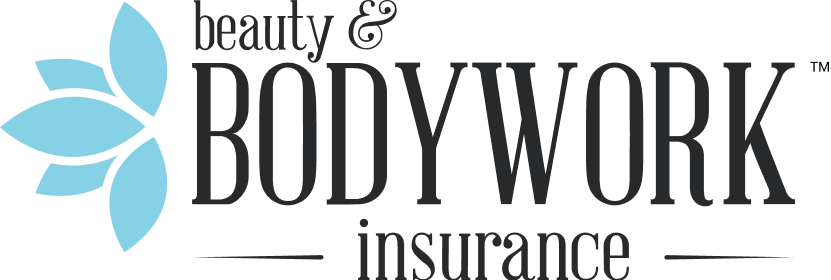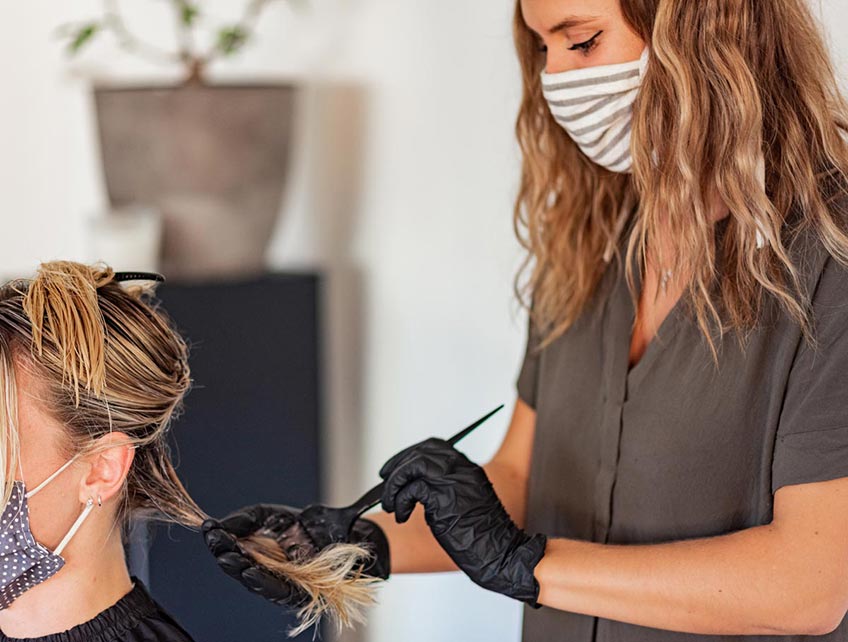When it comes to setting up a home salon, Angelina Schofield has it pretty much nailed.
In this video from her YouTube channel, Angelina walks us through the process of setting up her home salon including the do’s, don’ts, and must-haves—and if we may say so, the final product turned out gorgeous!
Whether your “why” is convenience, creative freedom, or financial motivations, there are plenty of reasons to set up an in-home salon. If you’re still in the planning stages, let us walk you through the basics and answer a few questions so you know exactly what to expect!
Meet the Requirements for In-Home Salons
Starting a salon in your home can be your ticket to a rewarding, profitable business (with a commute you can’t beat!) But there are a few requirements you need to take care of if you’re going to do it right
1. Get Your License
Step number one in opening your own salon is to get your cosmetologist license!
Getting your cosmetologist license can look different depending on the state you live in, so start by checking the requirements of the State Board of Cosmetology where you live. Typically, you’ll need to complete the following prerequisites:
- Have a high school diploma or GED
- Enroll in a board certified cosmetology school
- Complete the required courses and required hands-on training hours (this is usually between 1,000-2,000 hours)
- Pass the state licensing exam
Graduating from cosmetology school and getting licensed gives you the knowledge to safely and effectively practice cosmetology in your state. And it’s legally required—fines for practicing cosmetology without a license can be hefty. Plus, it’s a big indicator to your clients that you’ve put in the time and effort to take your career seriously, and that they’re right to trust you with their physical appearance.
2. Handle the Legal Side
Improper business registration and zoning violations can affect everything from your taxes to home equity, not to mention potential legal consequences like fines or even jail time. So if you want to run a salon from inside your home, following the business and zoning regulations in your area is crucial.
First, research your state requirements. One way to do this is to contact your state’s cosmetology board and ask them. For example, some states require a permanent wall that separates your salon from the rest of your home, as well as a separate entrance to your salon. Another requirement in some states is to have a bathroom available to your clients that is not used by those in your home.
Before starting an in-home salon business:
- Consult with a small business attorney about which legal structure (e.g., limited liability corporation or LLC, corporation, etc.) is best for your business.
- Contact a local tax expert about specific permits or tax practices you’ll need and get a Federal Employer Identification Number (EIN), which you’ll need to file taxes.
- Find out which amenities and services you’re allowed to offer within your home from your local zoning board, home owners association (HOA), and so on).
- Research which permits you need to operate a salon out of your home, such as a general business license, home occupation permit, sign permit, or health and safety qualification.
- Register your business with your state or local government.
3. Protect Your Business
After putting in all of that work to set up your new in-home salon, it’s time to protect it! Getting a general liability policy for your in-home salon can protect your business, and your clients in the event that something goes wrong with a treatment and a client is injured, your tools or furnishings get damaged, or if your client is unhappy with their final results.
In many states, having cosmetology insurance is even a legal requirement for in-home salons.
In addition to general liability coverage through BBI, consult with your home owners insurance company to make sure that your commercial space has property insurance coverage. Many insurance companies offer an umbrella policy that protects both your living and work space, for example.
4. Invest in Quality
Furnishings, Tools and Equipment
Clients are more likely to choose your in-home salon if it contains the same professional tools and amenities they’d find in a traditional salon. Consider which tools matter most and invest in high-quality options that reflect well on your business.
Some materials you might want to consider investing in include:
- High quality chairs
- A dedicated wet station and driers
- A coffee maker or beverage fridge to offer refreshments while your clients wait
- Tools you find yourself using often such as shears, clippers, or styling products
>Need some more ideas on the kinds of tools and amenities your salon needs? Check out our salon and spa equipment guide here!

How to Start & Grow Your In-home Salon
You’ve scrimped and saved for the best equipment; you’ve put yourself through school; you’ve handled all the legal aspects; and you’ve done everything you can to protect yourself and your clients from excess liability.
Congratulations, you are officially a business owner!
Now the big question: what comes next? Let’s take a look at a few ways to start and grow an in-home salon.
Market Your In-Home Salon
As an independent business owner, it’s your responsibility to get the word out about your new salon. Thankfully, in the digital age, there are plenty of salon marketing strategies available to get your messaging out there, attract clients and grow your brand, such as:
- Social media
- Direct mail advertising
- Word of mouth
- Networking
- Referral rewards
- VIP events and exclusives
- New customer offers
- Google reviews – and more
Leverage Technology
Apps are a must for in-home salons. From saving time with salon scheduling software, to making it easy for clients to pay with electronic point of sale systems and payment apps. Many of these types of apps can even send automatic appointment reminders, solicit reviews, implement customer loyalty programs, and handle payments—without you lifting a finger!
Price Your Services Competitively
It’s important to be familiar with the market you’re offering services in and pricing your services and products to match. For example, few clients would consider a home salon the place to come for a high-end cut or specialty service.
This doesn’t mean you can’t offer those things! But familiarizing yourself with some markers like average household income of the surrounding area and the average price of similar services and products offered in nearby salons can help you price your services competitively.
It’s best practice to offer a few basic services, and then, if you have the knowledge and ability, specialize in one specific area to increase revenue in niche markets.
Statistics About Salons in the US
- The estimated average cost of opening a new salon in the U.S. is around $62,000. (In-home salon owners can probably plan to spend a fraction of that amount based on the kinds of remodeling needed to create your space and the fact that you probably won’t need as many chairs, sinks, driers, etc. as a traditional salon.)
- The U.S. salon industry was worth almost $50 billion in 2023, and many experts agree that the market share is still recovering from pre-pandemic levels. The same source estimates that salons earn an average of $317,000 per year in gross revenue.
- There were approximately 444,102 licensed salons operating in the U.S. in 2023. The states with the most salons include California, Florida, Texas, and New York.
Frequently Asked Questions (FAQs)
How Much Does It Cost to Put a Salon in My Home?
While the average cost to open a salon is upwards of $60,000, the cost to put a salon in your home could be as little as around $10,000. The final cost depends on what equipment, furnishings, and supplies you need as well as what it will take to meet state and local requirements.
What Do I Need for an In-home Salon?
Setting up an in-home salon requires basic salon equipment like a chair, mirror, hairdryer, and shampoo station. To perform client services, you’ll also need hair care products, styling tools, and cleaning supplies. And don’t forget about obtaining the necessary licenses and permits to operate legally from your home.
How Much Money Can I Make With an In-home Salon?
Hairdressers and cosmetologists earn over $32,700 on average. As an in-home salon owner, you may be able to earn more than if you worked in a traditional salon since you can also benefit from selling retail products to clients and even lease space to another cosmetologist. This would help you earn more and offset the costs needed to reinvest in your business.
Bottom Line
If you’re dreaming of the day you can start seeing your clients from the comfort of your own home, we hope this primer gives you some ideas and a clear vision for the future! If you’re looking for some more advice, check out some of our blog posts about the salon business including:





